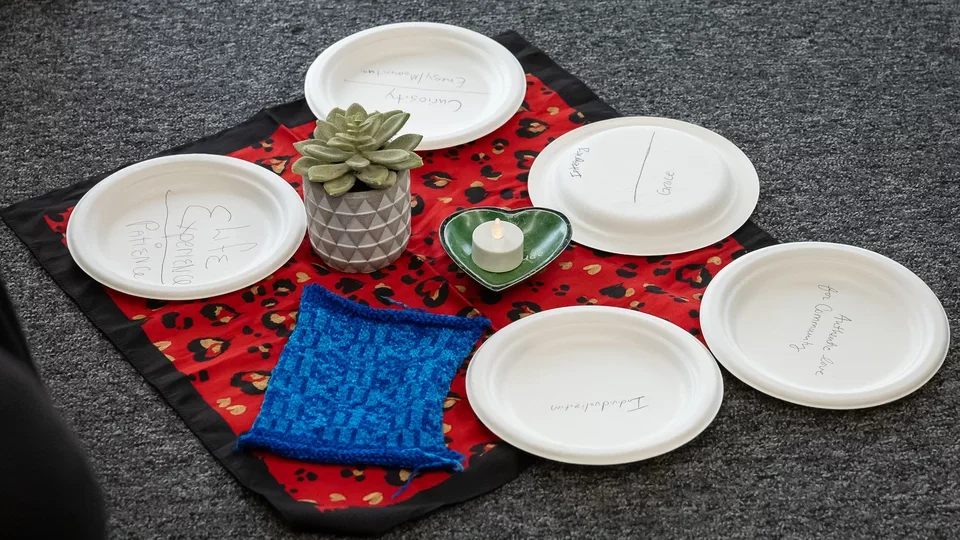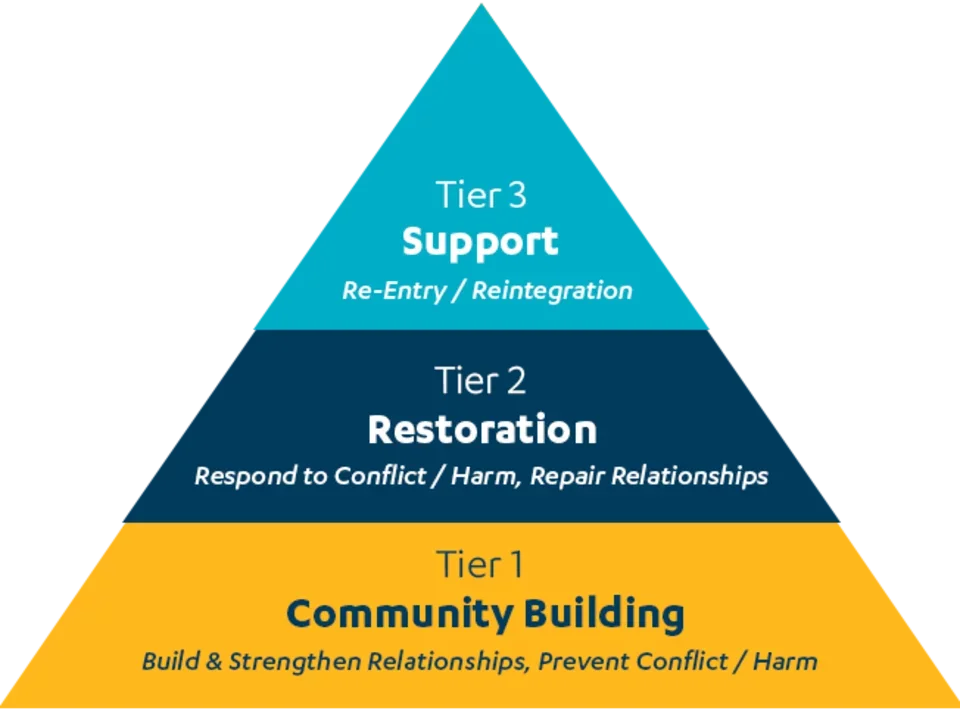Purpose & Use
What are Circles?

A safe gathering space where participants can seek to address and support the various health and wellbeing needs of our community.
At DGSOM, we use Circles to...
- co-create change.
- build community.
- improve communication and relationships.
- remediate harm.
- offer a new approach to conflict resolution that is less punitive in nature.
DGSOM RPAM Circles can occur either virtually or in-person and are presented in a more informal environment to elicit the authenticity needed to help foster collaboration, comfort, and inclusivity.
Each Circle is typically monitored and guided by one facilitator per group of five to 20 participants. Circles are categorized into one of three tiers, each with its own individual purpose and goals. Our multipartial facilitators are trained and certified to meet the needs of a given Circle tier, and our participants are always able to speak for themselves.

All Circles have these 5 Cs in common:
- Convening
- Connection
- Concern
- Collaboration
- Closing
Learn about the different Circle tiers.
Purpose: Sometimes community members experience an extended period of time away from the workplace, classroom, or training space for reasons including but not limited to:
- Family and Medical Leave Absence (FMLA)
- Military Leave
- Administrative Leave
- Investigatory Leave
To support their return to our community, Tier 3 Support Circles lay the groundwork for a humane, efficient, and productive transition back to DGSOM.
Goal: Create Positive Re-Entry / Reintegration Processes after School/Work Leave
Who is involved? Individuals or groups returning to our community and relevant stakeholders.
What will we do? Reintegrate community members in a manner that is:
- Humane
- Ensures accountability
- Sets the groundwork for a productive return
- Clarifies the support needed to ensure a successful reintegration
What questions we will ask ourselves?
- How do we support this individual?
- How do we support harmed parties?
- Has the individual taken responsibility?
- How do we prevent recurrence?
- How will we welcome this person back? Who can support?
- What resources are needed for successful reintegration?
Purpose: When harm takes place, it has the potential to impact multiple members within the community. Rather than focusing on investigation and sanctioning, Tier 2 Restorative Circles serve to identify harm, recognize the impact of the harm, and create a collaborative process for repairing and rebuilding trust.
Goal: Respond to Conflict / Harm, Repair Relationships
Who is involved? Harmed person(s) and person(s) who have caused a harm. It is important to remember that harm is often not one-sided and can sometimes feel reciprocal for all persons involved.
What will we do?
- Address harm
- Unearth what happened
- Identify impact of the harm
- Develop a plan to repair relationships
What questions we will ask ourselves?
- What happened?
- Who has been impacted?
- How have they been impacted?
- What harm(s) need to be addressed?
- What need(s) do the impacted person(s) have?
- What will make things right?
- How do we rebuild relationships?
- How do we address issues in a restorative way?
Purpose: It can be very difficult to engage in discussion around repairing a community, if members don’t feel connected to or represented by it. Arguably the most important type of circle, Tier 1 Community Building Circles aim to foster relationships and build trust, setting the stage for more constructive, empathetic, and respectful conversations in the event a harm is caused.
Goal: Build & Strengthen Relationships, Prevent Conflict / Harm
Who is involved? All members of the community.
What will we do?
- Surface student, staff, trainee, and faculty issues
- Discuss current events
- Allow for expressive forms of the communities' voice
What questions will we ask ourselves?
- Who are we?
- What are our stories?
- What are our core values?
- What is important to us?
- What kind of community do we want?
- How do we want to treat each other?
- How will we all contribute?
